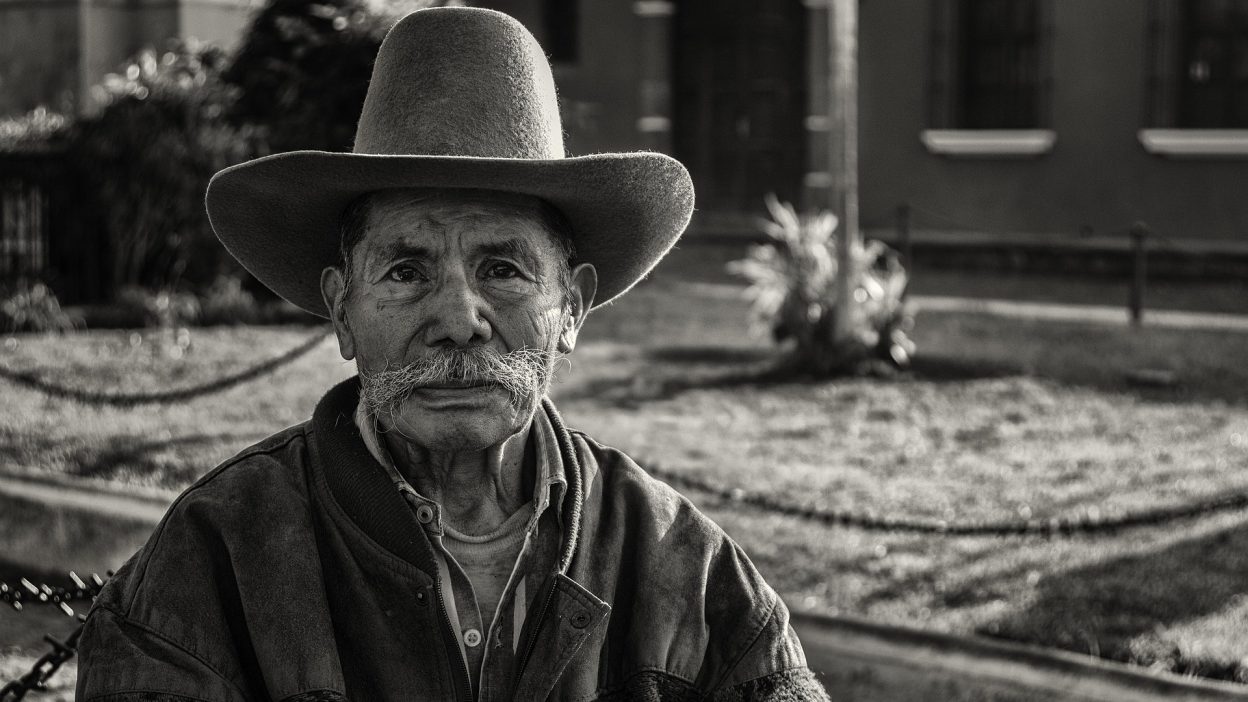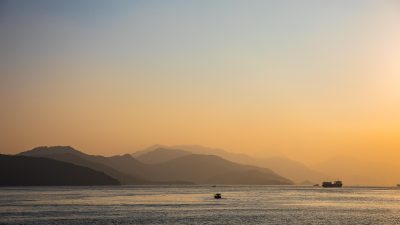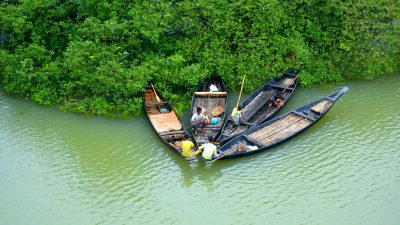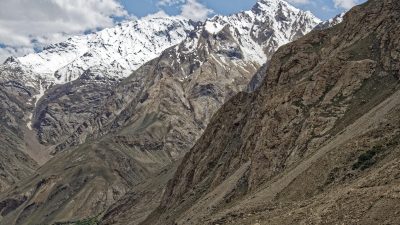When Santa María Reduced Guatemala to Ashes
The 1902 Santa María eruption remains one of the deadliest volcanic catastrophes in history. This colossal explosion, classified as a VEI-6 event, unleashed unimaginable devastation, wiping out entire villages, crippling Guatemala’s economy, and leading to thousands of deaths. Despite its cataclysmic scale, this disaster has been largely overshadowed by eruptions like Mount Tambora (1815) and Mount St. Helens (1980).
But was this destruction inevitable, or could it have been avoided? Did government inaction worsen the death toll? And most importantly—could another eruption of this magnitude happen again?
1. The Silent Volcano That Turned Into a Monster
For centuries, Santa María appeared harmless, giving locals no reason to fear it. The 3,772-metre-tall (12,375 feet) stratovolcano had shown no recorded activity for at least 500 years, leading many to believe it was completely dormant.
But in October 1902, that false sense of security was shattered. Without warning, on the 24th of October, the volcano exploded in a way that no one had ever imagined. A mushroom cloud of ash shot 28 km (17 miles) into the sky, while scorching pyroclastic flows—fast-moving waves of gas and molten rock—obliterated everything in their path.
The sheer force of the eruption was terrifyingly powerful. It released more energy than 8,000 Hiroshima bombs and was so loud that it was heard over 800 km (500 miles) away, even reaching Costa Rica.
2. Were There Signs Before the Catastrophe? The Warnings Guatemala Ignored
With modern knowledge, it is clear that the 1902 eruption was not entirely unpredictable. In the weeks before the explosion, there were frequent earthquakes near the volcano, a classic sign of rising magma. However, since Guatemala had no scientific monitoring at the time, these warning tremors were ignored.
Even local farmers had observed strange occurrences. Many reported that their livestock refused to eat, acted distressed, and tried to flee from the area. In hindsight, these were clear signals of an impending disaster. Yet, since volcanic eruptions were not well understood, these warnings were dismissed.
When the volcano erupted, the people of Guatemala had no time to escape. No alerts were issued, and the lack of preparation resulted in a staggering loss of life.
3. Unimaginable Loss: The True Impact of the 1902 Santa María Eruption
- Death Toll: How Many Really Died?
Officially, around 6,000 people perished, but experts believe the real number was much higher. Many victims were never found, as entire villages were buried under volcanic debris. Some suggest the true toll could have reached 20,000 or more. - A Nation of the Wounded and Homeless
Thousands suffered severe burns from fiery pyroclastic flows, while many others choked on volcanic ash, leading to permanent lung damage. Tens of thousands were left without homes, forced to flee into the mountains with no food or shelter. - Darkness Over Central America
Santa María’s eruption blanketed 250,000 square kilometres in thick volcanic ash, turning day into night. The sun was completely obscured for days in some regions, leading to widespread panic. - Economic Collapse: The Death of Guatemala’s Coffee Industry
In 1902, coffee was Guatemala’s largest export, but the eruption destroyed thousands of hectares of plantations, crippling the nation’s economy for years. Entire farming families lost their livelihoods overnight, forcing many into poverty. - The Long-Term Fallout: A Disaster That Never Truly Ended
The aftermath of the eruption left lasting scars. Diseases like cholera and typhoid surged due to contaminated water sources, while famine followed as crops were suffocated by volcanic ash. Many communities never fully recovered.
4. When the Earth Shook and Fire Rained From the Sky
At exactly 6:00 PM on 24 October 1902, the ground violently trembled, followed by a deafening explosion. Within minutes, a massive column of ash had risen over 28 km into the sky, and fire-red lava bombs rained down on surrounding villages.
Entire settlements vanished in seconds, swallowed by rivers of molten rock. The temperature of the pyroclastic flows exceeded 1,000°C, incinerating everything in their wake. The eruption was so powerful that the shockwave ripped trees from their roots and shattered windows over 100 km away.
5. Why Was This Eruption So Catastrophic?
Santa María’s unbelievable destruction was the result of several key factors:
- VEI-6 Mega Eruption: The explosion released 8 cubic kilometres of volcanic material, making it one of the largest in recorded history.
- A Population Caught Off Guard: The people had no warning systems, no disaster preparedness, and no chance to escape.
- Unprecedented Ash Fallout: The ash cloud travelled over 4,000 km, disrupting the global climate and lowering temperatures worldwide.
6. Who Suffered the Most? The Forgotten Poor of Guatemala
The wealthier regions of Guatemala recovered quickly, but the poorest communities faced decades of suffering. Many of the indigenous Mayan villages destroyed in the eruption were never rebuilt, leaving thousands homeless forever.
With no compensation or government support, many survivors were forced into hard labour on plantations or migrated to cities, where they were exploited for low wages. This disaster deepened social inequalities and left a generation in despair.
7. Stories from the Survivors: A Glimpse into Hell
- A Roar Like the End of the World: Survivors recalled a sound so loud it ruptured eardrums.
- A Race Against Death: Entire families were running through fire and ash, desperately trying to escape.
- An Eternal Night: Ash blackened the sky so completely that people thought the world was ending.
- Buried Alive: Rescue teams later found villages where entire populations had suffocated under the debris.
- Years of Suffering: Many survivors suffered lifelong health problems, from breathing issues to severe PTSD.
8. A Government’s Failure: How Authorities Let Thousands Perish
The Guatemalan government’s response to the 1902 Santa María eruption was disastrously slow. With no disaster preparedness plans, officials were caught off guard, leaving victims to fend for themselves in the face of unimaginable destruction.
In the days following the eruption, many survivors were desperately searching for food, water, and shelter, but help was nowhere to be found. Thousands of people were injured, choking on ash, and suffering from severe burns, yet medical assistance was almost non-existent. The government’s failure to act quickly meant that many who could have been saved ultimately perished due to a lack of medical aid and relief efforts.
To make matters worse, some government officials downplayed the disaster, not wanting to admit the true scale of devastation. Instead of prioritising emergency relief, they focused on damage control, trying to protect Guatemala’s international reputation. This neglect and incompetence deepened the suffering of the poorest communities, many of whom were abandoned to die.
Even in the years that followed, recovery efforts remained slow, and many regions never fully rebuilt. The eruption revealed severe flaws in Guatemala’s disaster response, flaws that would continue to plague the country in future catastrophes.
9. Why Has This Disaster Been Forgotten?
Despite its sheer scale, the Santa María eruption of 1902 has been largely erased from global history. Unlike Krakatoa (1883), Mount St. Helens (1980), or Mount Tambora (1815), this disaster is rarely mentioned, and most people outside Central America have never even heard of it. But why?
One of the biggest reasons is the lack of global media coverage at the time. Unlike Western countries, Guatemala did not have a strong international presence, meaning that news of the eruption did not spread widely.
Additionally, political instability in Guatemala at the time meant that there was little effort to document the event properly. Unlike other major volcanic disasters, there were no detailed scientific studies or major newspaper reports in English-speaking countries, which contributed to its historical obscurity.
Another reason is that 1902 saw multiple major disasters—including the Mount Pelée eruption in Martinique, which killed 30,000 people just five months earlier. The Santa María eruption was overshadowed, and by the time reports surfaced, the world’s attention had moved on.
Finally, Santa María has remained relatively quiet compared to other active volcanoes. While it still erupts through the Santiaguito lava dome, it has not had another eruption on the same scale, making it less of a focus for modern volcanologists.
Despite this, the 1902 eruption remains one of the most catastrophic in history, and its forgotten status does not erase the immense suffering it caused.
10. Is Santa María Still a Threat? Could It Erupt Again?
Yes—Santa María is still very much an active volcano, and scientists believe another major eruption is possible. Although the main crater from the 1902 eruption has remained largely dormant, a new lava dome called Santiaguito has been steadily growing at its base since 1922.
Santiaguito has erupted multiple times over the last century, with smaller explosive events and lava flows. While these eruptions have been nowhere near as catastrophic as the 1902 event, they prove that the volcano is still alive.
Volcanologists have warned that if enough pressure builds up beneath Santa María, it could lead to another major eruption—one that could be just as devastating as 1902. Given that millions of people now live in the surrounding areas, a future eruption could be even deadlier than before.
Thankfully, modern technology now allows for volcanic monitoring, meaning that seismic activity and gas emissions can be studied to provide early warnings. However, if a large-scale eruption does happen, Guatemala’s ability to manage the disaster remains a serious concern, given its history of poor disaster response.
Santa María is not just a relic of the past—it is a ticking time bomb that could erupt again at any moment.
FAQs About the 1902 Santa María Eruption
1. How many people died in the Santa María eruption?
The exact death toll remains uncertain, but estimates range from 6,000 to 8,000 people. Many villages were buried under volcanic ash and pyroclastic flows, leaving thousands more severely injured.
2. How powerful was the 1902 Santa María eruption?
The eruption had a Volcanic Explosivity Index (VEI) of 6, making it one of the largest eruptions of the 20th century. It released 10 cubic kilometres of ash, which travelled as far as Mexico and the United States.
3. What caused the eruption of Santa María?
The eruption was triggered by tectonic activity along the Central American volcanic arc, where the Cocos Plate subducts beneath the Caribbean Plate. A magma chamber beneath the volcano had been building pressure for centuries, leading to the sudden explosion.
4. Could Santa María erupt again?
Yes, Santa María is still an active volcano. The Santiaguito lava dome at its base has been erupting regularly since 1922, and scientists warn that a major eruption could happen again in the future.
5. Why is the 1902 Santa María eruption not well known?
The eruption was overshadowed by other disasters, such as the Mount Pelée eruption in 1902, which killed 30,000 people. Additionally, limited global media coverage and political instability in Guatemala prevented the disaster from being widely reported.




